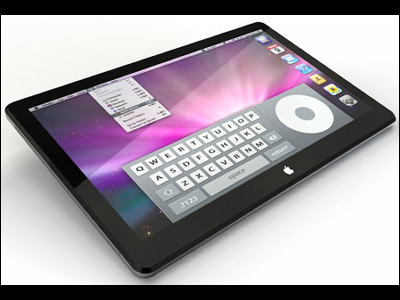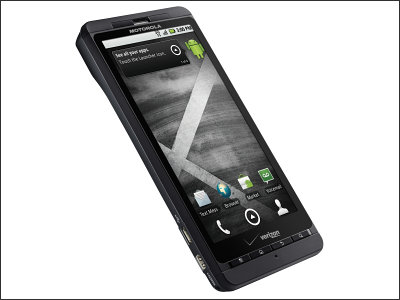Apple's revolutionary PDA 'Newton' celebrates its 30th anniversary: what's the story behind its development?

By
The Newton is a personal digital assistant (PDA) that Apple released in 1992 but discontinued after just five years. IT news site Ars Technica looks back on Apple's Newton, which celebrated exactly 30 years since its release on May 29, 2022.
Remembering Apple's Newton, 30 years on | Ars Technica
https://arstechnica.com/gadgets/2022/05/remembering-apples-newton-30-years-on/
Steve Jobs, who co-founded Apple in 1976, persuaded marketing guru John Sculley to leave PepsiCo and become Apple's president by asking him, 'Do you want to keep selling sugared water for the rest of your life, or do you want to change the world?' However, the relationship between Jobs and Sculley deteriorated rapidly after Jobs misjudged the demand for the Macintosh and incurred a huge loss. Jobs lost all his jobs and was effectively kicked out of Apple on May 31, 1985.
Sculley, who took over as head of Apple without Jobs, started by eliminating the company's losses by selling the Macintosh II , but he realized that without a visionary like Jobs, the company had no future.
Around the same time, Alan Kay, known as the father of the personal computer and a fellow at Apple, visited Sculley and told him, 'I've run out of ideas.' So Sculley came up with the idea of a 'new type of computing device.'
Below is the movie 'Knowledge Navigator', which summarizes the image of the 'new type of computing device' that Scully thought of. When you open the thin bi-fold plate, a color LCD appears, and you can manage your schedule with a virtual assistant, make camera calls with others, and manage files as they are by touch operation, which are functions that can be realized by modern iPads and iPhones.
Apple Knowledge Navigator Video (1987) - YouTube
This concept video was so revolutionary at the time that some within the company mocked it, saying it was 'too unrealistic' and 'there's no way it'll ever be of any use.'
After the release of the Macintosh II, Steve Sakoman, an engineer at Apple, wanted to develop a foldable tablet device with handwriting input, just like Sculley's concept, rather than a desktop or laptop PC. So the Newton development project was started with Sakoman at the helm.
Sakoman approached AT&T to design a low-power C Reduced Instruction Set Processor (CRISP) CPU, called Hobbit , for use in the Newton, but it was expensive, had many bugs, and was not very powerful. Three Hobbits were needed to run the Newton, which would have meant a minimum price of $6,000 (about 1 million yen at the time), so the Hobbits were not included.
Disappointed by the stalled development of the Newton, Sakoman left Apple in 1990 to help found Be , which developed the BeOS . Two of the Hobbits he designed with AT&T were installed in the early prototypes of the BeBox , a PC with BeOS.

After Sakoman left, the Newton project was restarted under Larry Tesler, Apple's chief scientist. During this time, Apple approached Acorn Computers, a British company that was developing a new CPU design that was 'quite fast with incredibly low power requirements.' Apple invested $3 million in Acorn Computers and helped the company's CPU design engineers spin off into Acorn RISC Machines, which later became Arm Holdings.
Tesla brought Steve Capps, an engineer who had worked on the development of the Macintosh, back to Apple and rebooted the Newton project with the concept of a 'mobile device based on handwriting input.'
The biggest challenge in the development of Newton was the development of handwriting recognition software, but there is an urban legend that this was the result of a strange encounter.
One day, Al Eisenstadt, Apple's vice president of board relations, was in Moscow, Russia when someone called to his hotel. It was a Russian engineer who knocked on Eisenstadt's door, who handed him a floppy disk and ran away. After taking the floppy disk back to Apple for analysis, it turned out to contain a demo of handwriting recognition software.
Whether this story is true or not is unclear, but Apple has since signed a contract with Stepan Pachkov, who founded a company called Para Graph International, to develop handwriting recognition software.
With the implementation of the Arm processor and the handwriting recognition function in sight, the Newton development project also got on track. In particular, the final size and shape of Newton was discussed, with Scully saying, 'It has to be small enough to fit in a jacket pocket.' Meanwhile, the engineers joked that they would sneak into Scully's house at night and re-tailor his jacket to make the pockets bigger.
Apple unveiled the Newton for the first time at the Consumer Electronics Show (CES) on May 29, 1992. During his keynote speech at CES, Sculley described the Newton as a 'Personal Digital Assistant' and coined the term PDA.

The Newton MessagePad was officially released on August 2, 1993. It was priced at $900 (about 99,000 yen at the time). The device's display was a black-and-white LCD screen with a resolution of 240 x 320 pixels, 4.5 inches (about 11.4 cm) vertically and 3.5 inches (about 8.9 cm) horizontally, and did not have a backlight. However, it was installed with a version upgrade of the model.

by
The initial model used four AAA batteries, but after a model change, this was changed to AA batteries. The maximum operating time is about 30 hours.

By Jim Abeles
Newton was equipped with its own OS 'NewtonOS' coded in C++. Newton could take notes, use a calculator, perform some simple mathematical formulas, function as a contact book, and manage appointments with a calendar. Ars Technica evaluated that it was ahead of its time in that it supported e-books and was capable of wireless communication using an infrared port. In addition, third-party developers could develop their own applications with its own custom development language, NewtonScript.

The main feature of the Newton was the ability to input handwriting using the included plastic stylus. However, this handwriting recognition did not work well on early models, so it was difficult to take notes properly. In the cartoon 'The Simpsons,' a scene was depicted in which 'Beat up Martin' was entered as 'Eat up Martha,' making fun of the poor accuracy of Newton's handwriting input.

Another drawback of the early models, the Newton MessagePad and Newton MessagePad 100, was that the CPU performance could not keep up with the overly functional NewtonOS. As a result, the early models were so unpopular that users mocked them, saying, 'This is a beta version of the product.'
However, the product was significantly improved with subsequent OS upgrades to improve the accuracy of the handwriting recognition system, a new design, a faster CPU, a larger display, a backlight and improved display gradation, the addition of a dictionary function to assist handwriting input, the addition of a function to rotate the screen when the device is turned sideways, the addition of functions to view image files and play music files, etc. Furthermore, the eMate300, which has a built-in physical keyboard, was released for educators.

Although Apple released many models while improving the Newton, sales were a complete failure. The total number of Newton series shipments was only 200,000, far below Apple's expectations.
The Newton project was canceled when Jobs returned to Apple in 1998. There was also a plan to separate the Newton project, which Sculley was a big fan of, into a separate company, but Jobs rejected this as well.
However, some of the people involved in the Newton project, which ended after only six years, such as Jonathan Ive, who designed the Newton body, Greg Christie, who designed the UI/UX, and Mike Calvert, who decided to equip the Newton with an Arm processor, would go on to be deeply involved in the iPod and iPhone. In addition, the NewtonScript prototype had a major influence on the development of JavaScript. Although the Newton project itself ended in failure, its genes have been passed down to the present day.

Related Posts:







